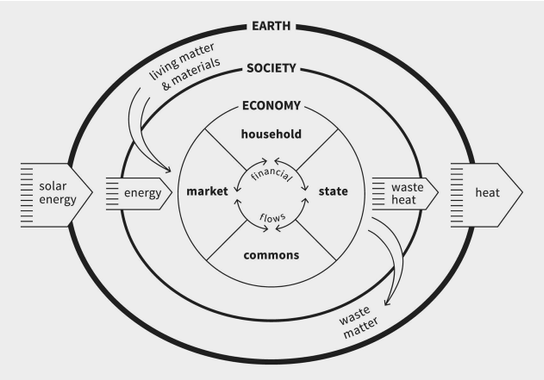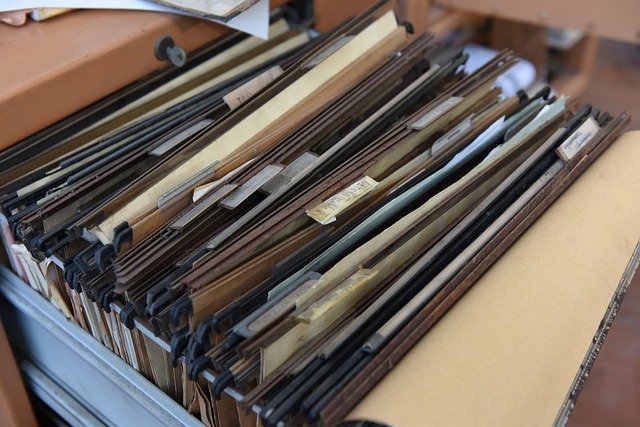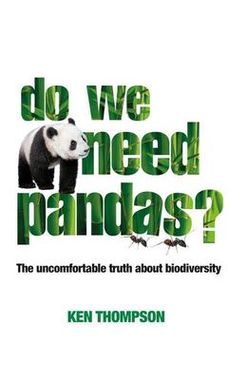Embed the Economy
About two weeks ago I was fortunate to participate in the first game design session of a game based on Doughnut Economics, that has the working title Seeds. The design of the game is now in full swing. Last week I told you I wanted to share a few things about the project, and I shared some Monopoly alternatives with you. Today, I want to go deeper into the question that underlies Seeds.
To do this, we have to go back to 2014, when Kate Raworth held her TED Talk in Athens:
She starts her talk with the money cycle, explaining how it misses out on all unpaid labour and, more importantly for my talk today, on the biosphere in which the economy is embedded. In her book and on her site the embedded economy is represented by the picture above.
Although this picture says it all, somehow it does not speak to me. In her presentation on Seeds, Sofia Kavlin, presented me with an image that is based on the embedded economy and spoke volumes:
What you see in the picture is a causal loop diagram made up of two feedback circles, one balancing feedback loop (B) and one reinforcing feedback loop (R). The arrows denote cause-and-effect relationships. The sign in each arrow, either a + or a -, shows the type of cause and effect relationship. A plus (+) indicates that when the cause increases, the effect increases too. Similarly, when the cause decreases, the effect decreases. Note that it does not mean that one has a positive effect on the other, it only means that the two change in the same direction.
A minus (-) sign indicates that when the cause increases, the effect decreases, or, the other way around, when the cause decreases, the effect increases. Thus, a minus sign means the two change in opposite directions.
Sofia has drawn one balancing feedback loop (B) and one reinforcing feedback loop (R), which is not a depiction of reality, but a visualisation of the future that is the underlying principle of the Seeds game. Let me explain a bit more.
At the center of the diagram we see Economic Activity. This is fed by the environment and resources. When economic activity increases, the environment deteriorates and resource reserves decrease, indicated by the minus sign. Since the direction is from the environment to the economy, you could read this as an extraction from the environment leads to an increase in economic activity.
The higher economic activity, the more goods and services it provides, to increase social value for the society. And the more needs and wants people have, the more economic activity is required. This is shown in the right, reinforcing, feedback loop. This looks a lot like the money cycle we are familiar with.
What happens now, is that the increased economic activity produces waste and pollution, further deteriorating the environment. Therefore, in reality, the lower arrow of the left loop has a minus sign. This means that, in fact, the feedback loop is a reinforcing loop. Both reinforcing loops together are spinning out of control. That is why we overshoot the planetary boundaries. Because of this mechanism, depicted in a simple picture.
But, as you can see, Sofia holds another picture of the world. She pictures a world where economic activity is regenerative by design, thus the plus sign in the lower arrow. Moreover, if we keep our needs and, especially, our wants, in check, and when we make our economies circular, the reinforcing feedback loop of economic activity and social value will not run amok like it has done for decades.
Now, to come back to the game design: If I understood correctly, Sofia wants to design a game that incentivises players to think not only circularly, but regeneratively too. And that did not only speak, but screamed.
henny@21steconomics.org – You can also find me on LinkedIn
Image found on Doughnut Economics







